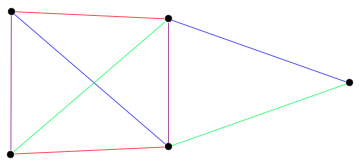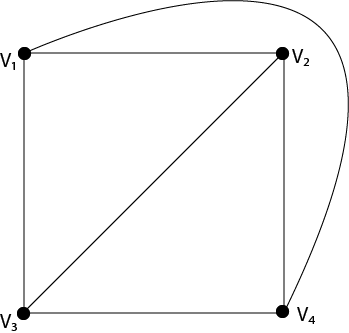Different Types Of Coloring In Graph Theory, 6 3 Graph Coloring Problem Backtracking Youtube
Different types of coloring in graph theory Indeed lately is being hunted by consumers around us, maybe one of you. Individuals are now accustomed to using the net in gadgets to view image and video information for inspiration, and according to the title of this post I will discuss about Different Types Of Coloring In Graph Theory.
- Total Coloring Wikipedia
- Graph Coloring Research Papers Academia Edu
- 2
- Graph Coloring In Graph Theory Chromatic Number Of Graphs Gate Vidyalay
- Graph Theory Coloring Tutorialspoint
- Graph Theory Brilliant Math Science Wiki
Find, Read, And Discover Different Types Of Coloring In Graph Theory, Such Us:
- Graph Coloring Set 1 Introduction And Applications Geeksforgeeks
- Mathematics Planar Graphs And Graph Coloring Geeksforgeeks
- Graph Coloring Wikipedia
- Graph Coloring Wikipedia The Free Encyclopedia Theoretical Computer Science Discrete Mathematics
- Color And Depth Perception Introduction To Psychology
If you are searching for Chinese New Year Lantern Coloring Page you've come to the ideal place. We ve got 104 images about chinese new year lantern coloring page adding images, photos, pictures, wallpapers, and more. In these web page, we also provide variety of images available. Such as png, jpg, animated gifs, pic art, symbol, blackandwhite, transparent, etc.

Graph Theory Ch 5 Coloring Of Graphs 1 Chapter 5 Coloring Of Graphs Ppt Download Chinese New Year Lantern Coloring Page
625 436 902 368.

Chinese new year lantern coloring page. In graph theory graph coloring is a special case of graph labeling. A survey on graph coloring for its types. This is called a vertex coloringsimilarly an edge coloring assigns a color to each.
Though there are a lot of different types of graphs depending upon the number of vertices number of edges interconnectivity and their overall structure some of such common types of graphs are as follows. Graph theory is also widely used in sociology as a way for example to measure actors prestige or to explore rumor spreading notably through the use of social network analysis software. A null graph is also called.
Some examples for topologies are star bridge series and parallel. The sudoku is then a graph of 81 vertices and chromatic number 9. There are various types of graphs depending upon the number of vertices number of edges interconnectivity and their overall structure.
In its simplest form it is a way of coloring the vertices of a graph such that no two adjacent vertices are of the same color. A k coloring of g is an assignment of k colors to the vertices of g in such a way that adjacent vertices are assigned different colors. Bipartite graphs a bipartite graph is a graph whose vertex set can be split into two sets in such a way that each edge of the graph joins a vertex in first set to a vertex in second set.
Let g be a graph with no loops. We will discuss only a certain few important types of graphs in this chapter. In the above graph there are three vertices named a b and c.
Applications of graph theory graph theory has its applications in diverse fields of engineering 1. A null graph is a graph in which there are no edges between its vertices. Under the umbrella of social networks are many different types of graphs.
The examples of bipartite graphs are. The types or organization of connections are named as topologies. In a graph no two adjacent vertices adjacent edges or adjacent regions are colored with minimum number of colors.
Note that path graph pn has n 1 edges and can be obtained from cycle graph c n by removing any edge. Electrical engineering the concepts of graph theory are used extensively in designing circuit connections. It is an assignment of labels traditionally called colors to elements of a graph subject to certain constraints.
Another well studied parameter in graph theory is domination which asks for a subset s of the vertex set of the graph such that every vertex outside. Sudoku can be seen as a graph coloring problem where the squares of the grid are vertices and the numbers are colors that must be different if in the same row column or 3 3 3 times 3 3 3 grid such vertices in the graph are connected by an edge.
More From Chinese New Year Lantern Coloring Page
- Preschool Yellow Coloring Pages
- Queen Bee Lol Coloring Sheet
- Eliana Name Coloring
- Arabic Alphabet Coloring Pages
- Minecraft Youtubers Coloring Pages
Incoming Search Terms:
- Planar And Non Planar Graphs Javatpoint Minecraft Youtubers Coloring Pages,
- The Four Color Theorem Minecraft Youtubers Coloring Pages,
- 5 Color Theorem Proof Using Mathematical Induction Method Graph Theory Lectures Youtube Minecraft Youtubers Coloring Pages,
- Adjacent Vertex Distinguishing Total Coloring Wikipedia Minecraft Youtubers Coloring Pages,
- Graph Coloring Research Papers Academia Edu Minecraft Youtubers Coloring Pages,
- Graph Theory Problems Applications Britannica Minecraft Youtubers Coloring Pages,







